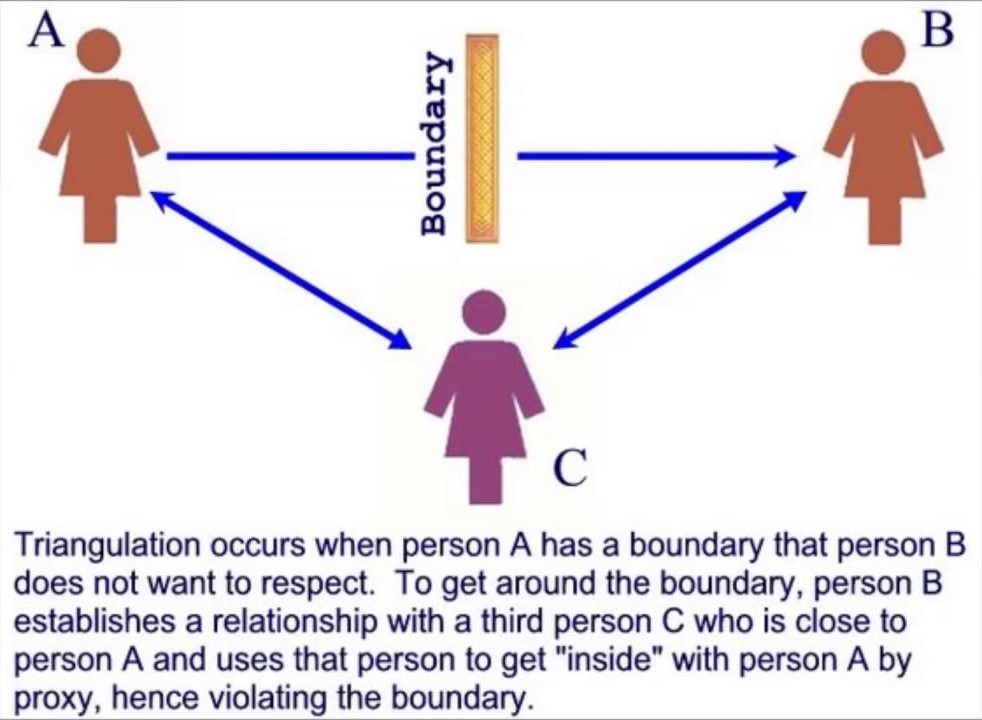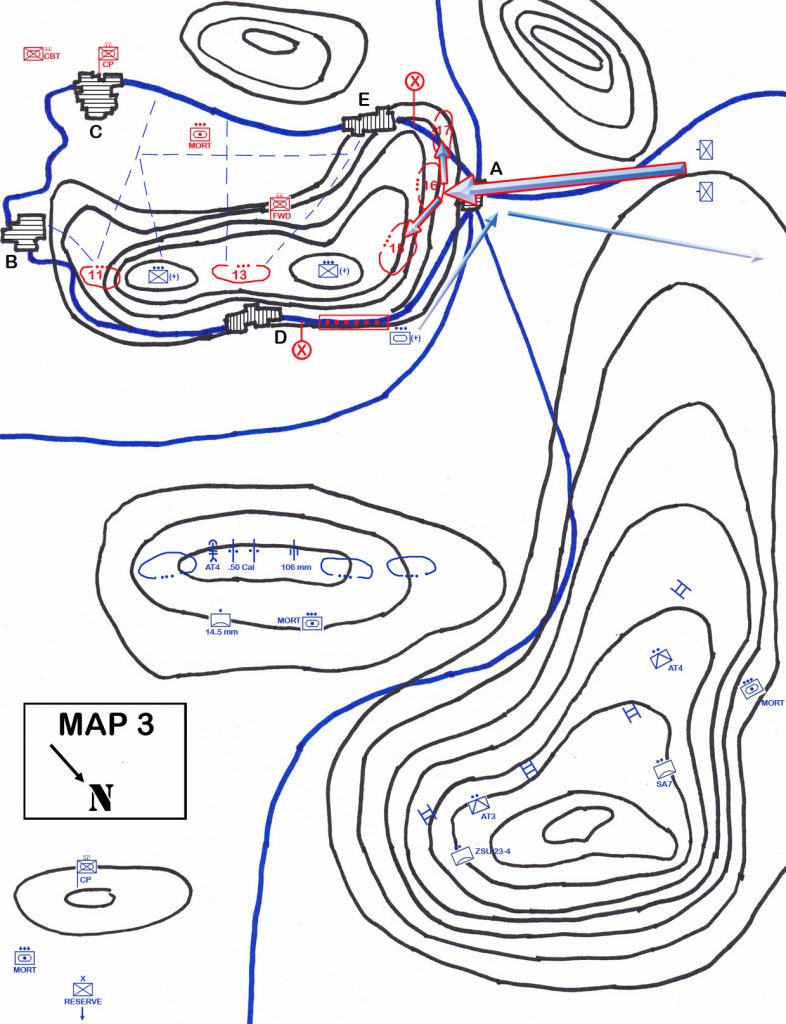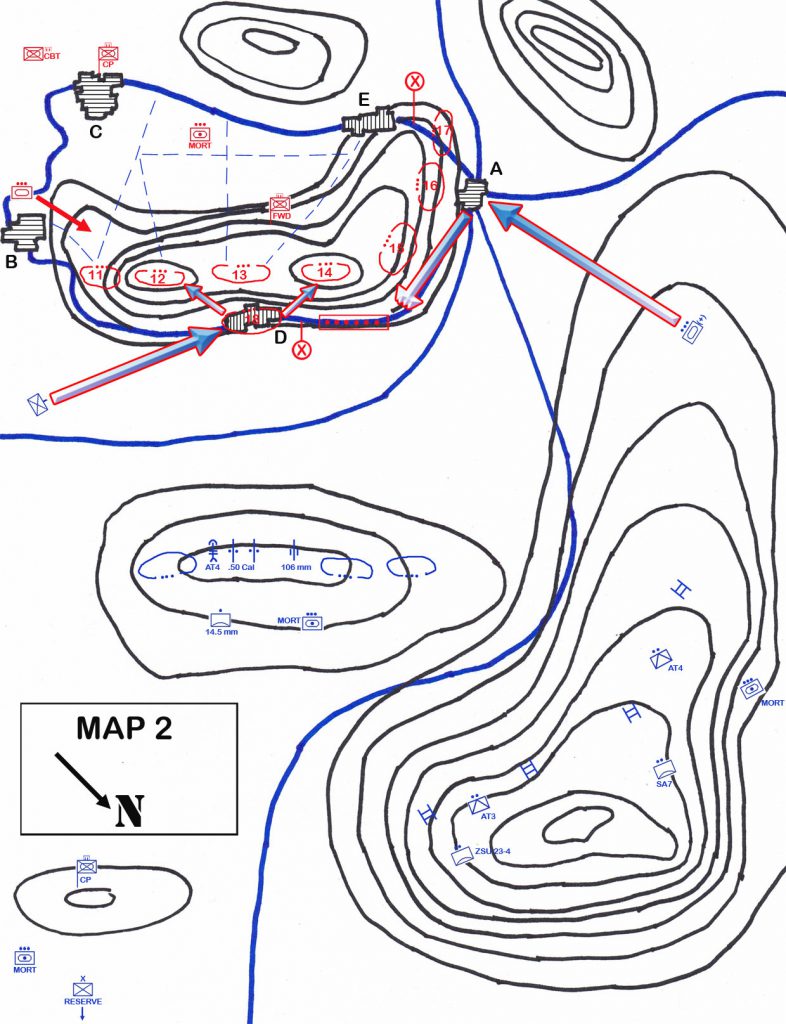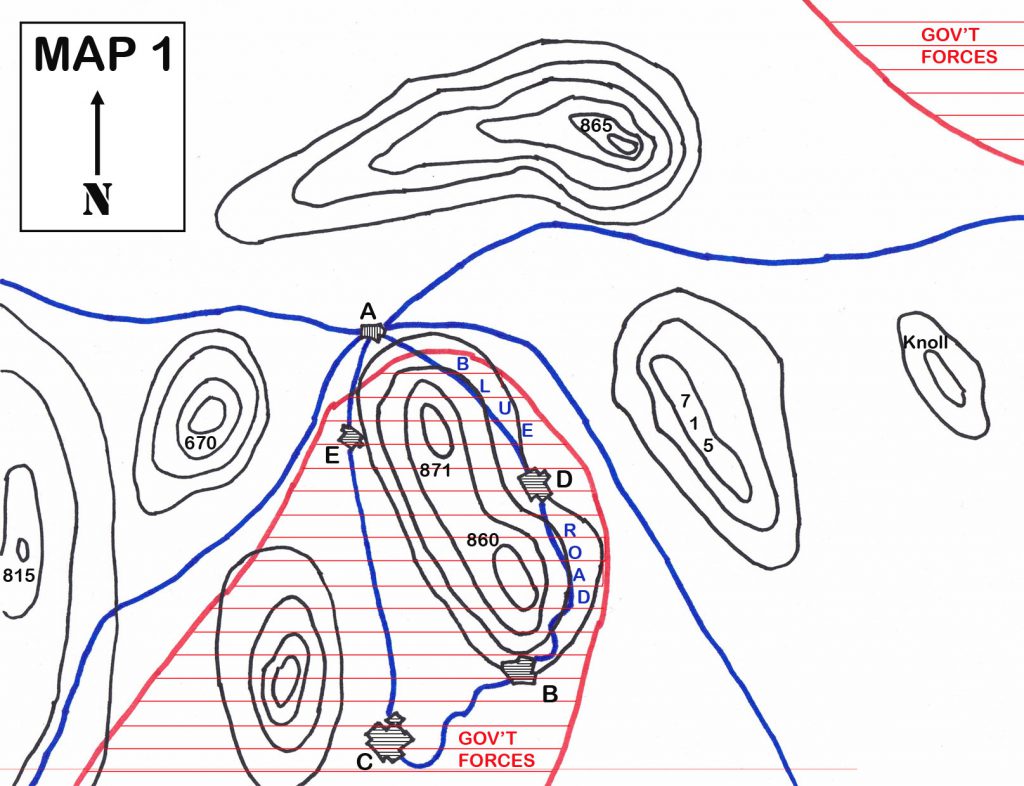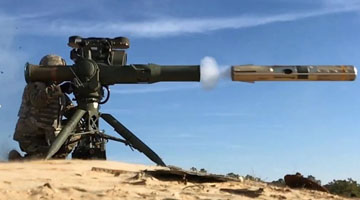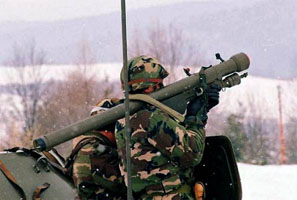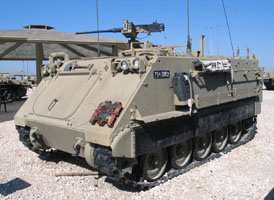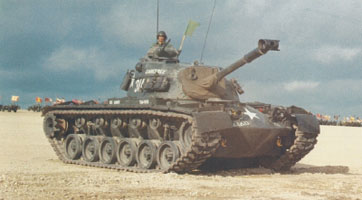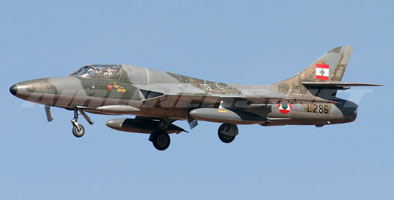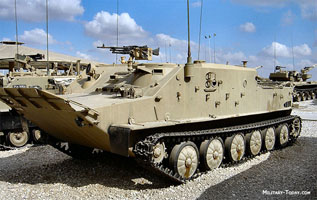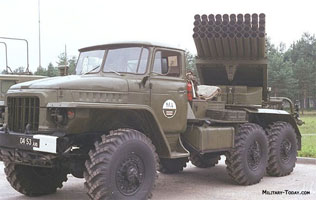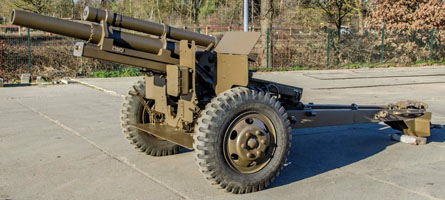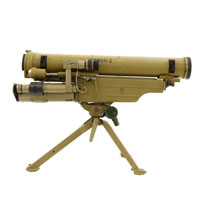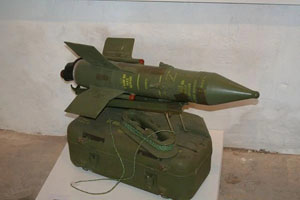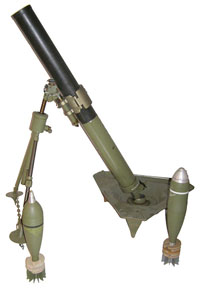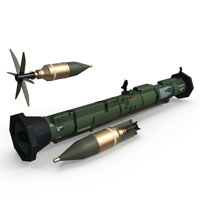Original August 1986 (Reprint January 2023 )

Foreword
I wrote this article in 1987 as a newly promoted captain, while attending the U.S. Army Armor Officer Advanced Course in Fort Knox, Kentucky. It was never published due to changes in the direction the political wind was blowing. I had the privilege of sponsoring a foreign officer, a captain of the Druze Militia from Lebanon. At that time, the Druze were sometimes our allies and sometimes our enemies. As such, the captain had the opportunity to attend officer training schools and learn to work with equipment on both sides of the Iron Curtain. He had also attended Soviet officer schools, learning their doctrine, and was as familiar with their tanks and weapons as he was with ours.
We became good friends as well, although the geopolitical situation during the subsequent years did not enable us to continue it for very long. He was a brilliant tactician, but also an intelligent and caring person, fighting for his family and life as most of the rest of us in uniform, irrespective of lines drawn in the sand or political ideologies. Something many civilians today have never grasped and do not seem to care to try to grasp. He related the story of this battle to me as part of his personal combat experiences.
Introduction
Rival forces in your government have invaded your homeland, forcing you, your family, and your countrymen to flee. They have succeeded in driving two wedges into your territory from opposite directions. It is only a matter of time before the invading forces link up and isolate you and your people. The enemy has a numerical advantage in both troops and weapons, plus the backing of several powerful nations. At this very moment, powerful enemy forces are massing at an impenetrable strongpoint to launch the final attack in their campaign. The only course of action available to you is obvious. You attack!
This article depicts an operation that started out in just such a manner. It occurred in Lebanon, in Spring 1984, and superbly illustrates the mechanics of reducing a strongpoint. The battle pitted the Druze Militia against the Christian Militia and Lebanese Army. The Druze conducted a well-executed spoiling attack against the Lebanese strongpoint to prevent two Lebanese armies from linking up and isolating them. I cannot give the exact location, nor mention the participants by name, because it would endanger them and their families. I have also changed all the village names.
Setting the Stage
The Druze began to experience problems in the Fall of 1982, when Christian militiamen moved into the Druze-controlled Shuf area just southeast of Beirut. The first clashes between Druze and Christians occurred in October 1982 and rapidly escalated. In September 1983, Israel withdrew her forces from the Shuf area and full-scale battles erupted between the Druze and Christians. The rest of the Lebanese Army joined the Christians. A cease fire on 26 September temporarily halted the fighting, but it resumed on in February 1984. The Lebanese Army was on the verge of isolating a large portion of the Druze forces when this operation took place.
The Battlefield
Lebanese forces had controlled key terrain in the region for over five months (see Map 1). The only line of communication between Druze forces in the eastern and western portions of the region ran through the corridor along Hills 715 and 865. Village C was the site of a holy temple, sacred to the Druze. Many Druze families lived in this village and the ones surrounding it. Thick vegetation covered the lower elevations, thinning out on the hilltops.
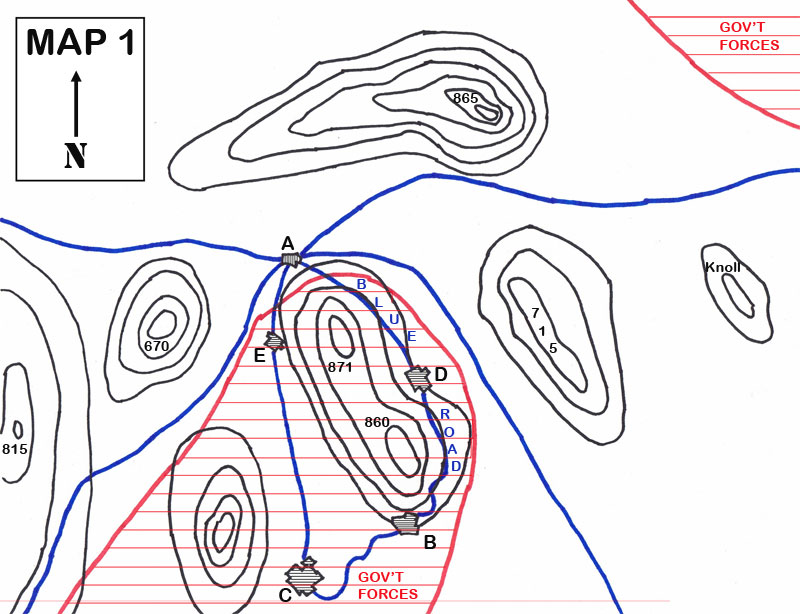
Click to Enlarge
Druze informants in the Lebanese Army notified the Druze that Lebanese forces were planning an attack to seize Hill 865. Seizing this hill would link up the two Lebanese armies, closing the corridor and isolating Druze forces to the west.
The Druze forces used predominantly Soviet equipment. This included T-55 tanks, BTR-50 personnel carriers, AT-3, AT-4, and AT-7 missiles, and 120mm mortars. They also possessed American M-113 armored personnel carriers armed with .50 caliber machine guns.
The Lebanese forces used predominantly American equipment. They used M-48 tanks, M-113 armored personnel carriers, and TOW anti-tank missiles. They also used some Soviet 120mm mortars and 122mm howitzers.
Initial Dispositions
Map 2 depicts the initial dispositions of both forces. Lebanese forces are in red. The Lebanese forces fortified Hills 860 and 871 with slightly less than a task force. They dug in all battle positions on these hills and provided them with overhead cover. Battle positions 15, 16 and 17 were the strongest and contained most of the tanks in the strongpoint. M-113s with .50 caliber machine guns and TOWs were present in all the battle positions. Several positions had 106mm howitzers, which the Lebanese used in both direct and indirect fire modes. A section of 120mm mortars occupied the center of the of the hill mass, on the reverse slope. The Lebanese command post and combat trains occupied Village C. Combat engineers prepared routes between the battle positions and to the rear (represented by dashed lines). They also emplaced anti-personnel mines to the front and rear of all positions, and anti-tank mines along the Blue Road.
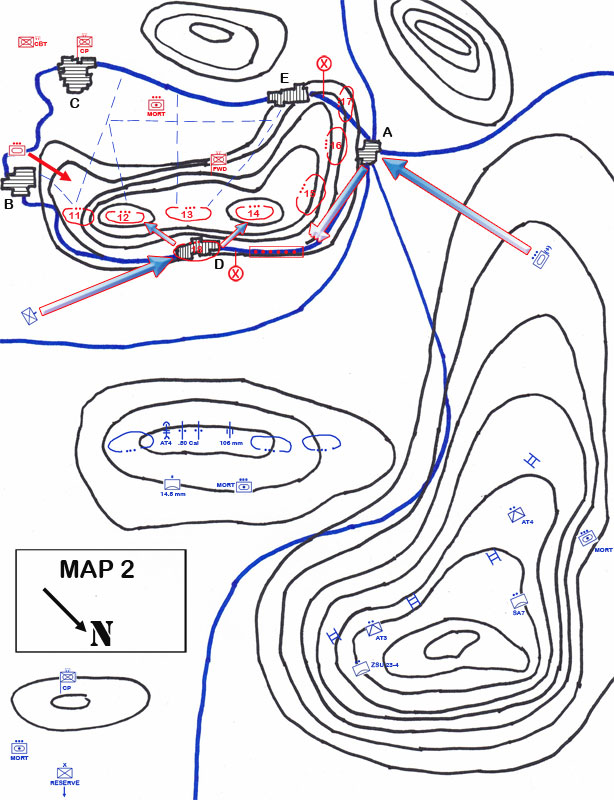
The Druze constructed strong, integrated positions on Hills 865, 815, 715 and 670. They also dug in all positions and provided them with overhead cover. Map 2 shows initial Druze positions in blue. Positions on Hill 865 faced both north and south. All Druze positions had air defense assets. A reinforced tank platoon (six T-55s) and two companies of infantry were in hide positions behind the western ridge of Hill 865. The Druze had a small strongpoint in Village A, approximately two platoons in size. This strongpoint was within hand grenade distance of Lebanese positions. The Druze command post was on a knoll east of Hill 715. Roughly a brigade of militia and a platoon of mortars were in reserve behind the knoll. Neither side effectively controlled traffic through the corridor.
Preparation
After becoming aware of the impending attack, the Druze immediately planned counter measures and a spoiling attack. Druze informants in the Lebanese Army began relaying information about enemy operations plans, troop dispositions, and weapons locations. Infiltration raids continued at the previous rate, but emphasized gathering information about weaknesses in the strongpoint. Artillery and mortar units prepared numerous alternate positions and relocated just prior to the spoiling attack. The Druze also made extensive use of BM-21 “Stalin Organ” multiple rocket launchers, mounted on trucks. These very mobile weapons could relocate quickly after firing. Finally, the Druze spread disinformation that they were planning to attack Lebanese held villages northeast of Hill 815, instead of the strongpoint.
Several days before their planned spoiling attack, the Druze began a light, but accurate, harassment fire on Lebanese positions. They destroyed four M-113s with AT-3 missiles, at ranges from 3,000 to 3,500 meters. All personnel carriers had exposed themselves no more than one foot above their battle positions. Druze T55s also destroyed several bunkers at ranges up to 3,200 meters, and shelled the Lebanese command post and trains with high explosive indirect fire.
The Attack
The first Druze attack began at 2200 hours on 20 April 1984. One company of dismounted infantry (from the reserve) infiltrated along a concealed trail (Map 2), guided by an old local man. They occupied an attack position just east of Village D. At 2400 hours, a platoon equipped with silenced sub-machine guns infiltrated into the village and captured it. The Druze completely surprised the defenders, who were unable to warn their comrades in the other battle positions. The rest of the Druze company followed and consolidated the village. They captured a total of twenty Lebanese soldiers.
The company then split into two platoons, reinforced by sub-machine gun squads. These two forces used concealed routes to attack battle positions 12 and 14, which contained no tanks. They once again achieved complete surprise, but the defenders were able fire some shots, warning the rest of the strongpoint. The Lebanese forces were now fully aware that battle positions 12 and 14 had fallen, but were unable to recapture them because they had no counterattack force. The Druze immediately occupied the bunkers in the battle positions, using the Lebanese troops’ own weapons against adjacent battle positions.
The reinforced Druze platoon of T-55s conducted an exploiting attack at 0100 hours along the Blue Road. They planned to attack through the gap opened in Village D, and penetrate the strongpoint. The T55s encountered and extensive anti-tank minefield several hundred meters short of Village D. They could not bypass the Blue Road because it ran alongside a steep mountainside. At 0130 hours, they began breaching operations under sporadic harassing fire from Lebanese soldiers in battle position 15.
The Druze infantrymen in battle positions 12 and 14 were meanwhile running low on ammunition. The company commander feared a Lebanese counterattack and radioed a request to his command post to withdraw. The Druze task force commander denied the request and urged him to hold on.
At 1300 hours, the reinforced tank platoon, still unable to breach the minefield, withdrew to Hill 865. It joined the four T-55s already on the hill and began shelling the Lebanese strong point with high explosive and HEAT rounds.
The Second Attack
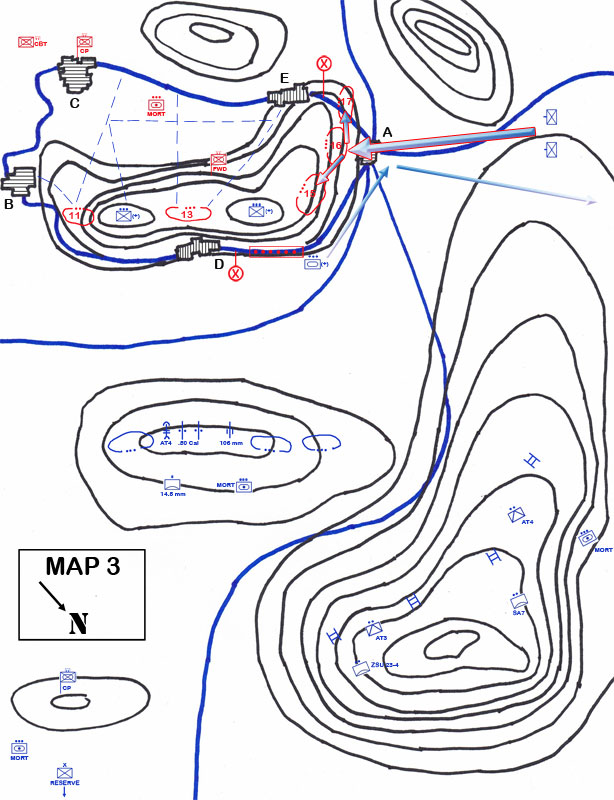
The second Druze attack began at 1330 hour. The task force executive officer mounted the two infantry companies behind Hill 685 into M113s and move them to Village A, with a ZSU 23-4 air defense track accompanied them. He decided against using BTR-50s because they were too slow, too loud, and mechanically unreliable. He dismounted 150 soldiers in Village A to occupy assault positions.
As soon as the assault troops and M-113s occupied covered positions, a Lebanese air strike hit the village. Four Hawker-Hunter jets strafed the Druze soldiers in the village, killing four of them. The Druze immediately opened fire with SA-7s and the ZSU 23-4, downing two of the jets. The remaining aircraft broke off the attack.
At 1350, the task force commander (on Hill 715) initiated a coordinated attack by directing his forces in battle positions 12 and 14 to fire into the rear of battle positions 15, 16 and 17 with small arms and individual anti-tank weapons. Druze tanks and artillery on Hills 865 and 715 fired on all Lebanese battle positions. This caused the Lebanese troops in those positions to panic and scramble for cover. At this moment, the Druze task force commander directed his executive officer to begin an assault on battle positions 16 and 17. The XO assumed control of the indirect fire elements and called for a mortar barrage 100 meters forward of Village A. He shifted the mortar fire southward as his troops advanced. Additional mortar fire from Hills 670 and 815 hammered the Lebanese positions and prevented Lebanese reinforcements from moving along the road southwest of the strongpoint. The XO shifted the fires to behind positions 15, 16 and 17 when he was within 50 meters of the bunkers. The assault force broke into the strongpoint at 1430 hours.
The executive officer then organized several assault groups to reduce the bunkers within the strongpoint, sending one west and leading two east himself. The groups consisted of light infantrymen and anti-armor specialists. The infantrymen suppressed the bunkers with grenades and small arms fire, while anti-armor troops destroyed the tanks and bunkers from the rear with handheld anti-tank weapons and explosive charges. Unknown to the Druze, the Lebanese troops had placed anti-personnel mines behind their own positions. The XO stepped on a mine while leading an assault on the rear of a bunker. It severely wounded him and prevented him from further participating in the battle. Even without his leadership, the Druze attack pressed on. The Lebanese troops, demoralized by the concentrated attacks from all sides, withdrew or surrendered. The Druze cleared battle positions 15, 16 and 17 by 1700 hours and prepared for a Lebanese counterattack.
The Counterattack
The counterattack came at dusk, as expected, but not in the form the Druze expected. A heliborne, company-sized force approached from the southwest and landed on top of the strongpoint. The Druze immediately called for indirect fire. Rockets and 120mm mortars destroyed several of the helicopters and inflicted many casualties on the counterattack force. Small arms fire from the Druze in the captured battle positions wiped out the remaining troops and crushed the counterattack.
Aftermath
As a result of their bold attack, the Druze seized the Lebanese strongpoint and thwarted a major attack. They used the momentum of their attack to clear the area to the west, including seventeen villages, in two days. The reduction of the strongpoint cost 24 Druze soldiers killed and 20 wounded. Forty Lebanese troops were killed, an undetermined number wounded, and 95 captured. The Druze also captured eight M-48 tanks and twelve M-113 personnel carriers, while destroying six M-48 tanks. The executive officer lost his left leg below the knee, but returned to duty several months later.
Analysis
Why were the Druze so successful in reducing the Lebanese strongpoint with evenly matched tactical forces? They followed several basic principles that ensured their success.
Intelligence Preparation
First, they performed good intelligence preparation of the battlefield (IPB). They made excellent use of informants, local intelligence, and infiltration raids to gain exact knowledge about enemy dispositions, weaknesses, weapon placement, concealed routes and whether a counterattack force existed. This preparation enabled them to strike at the enemy’s weakest point, while maintaining security for their own force. Their indirect fire struck critical areas, affecting the enemy’s ability to defend himself and counterattack. Their only shortcoming was not discovering the minefields on the Blue Road and behind battle position 16. They were flexible enough however, to adapt quickly to these situations.
Surprise
Second, the Druze ensured that they achieved surprise. They moved along a hidden trail to attack their first objective and made the initial assaults equipped with weapon silencers. Their stealth enabled them to accomplish what would ordinarily have taken a larger unit to do. The Druze added to the surprise with a good deception plan, making the enemy believe that their focus lay elsewhere. They made no changes to their normal patrol routines to indicate their true objective
Flexibility and Initiative
Third, the rebel’s flexibility and initiative contributed greatly to their success. They realized early into the attack that an armored force would not be able to break into the strongpoint. They proved themselves very flexible and re-focused their main effort on dismounted infantry assaults. When one assault bogged down, they displayed initiative by striking the enemy in an unexpected area and then using their original foothold to engage him from the rear.
Indirect Fire
Fourth, the Druze skillfully employed indirect fire to support their assault. Co-locating forward observers with the assaulting force permitted indirect fire extremely close to the line of advance. This gave the enemy no chance to re-man their weapons before assault troops reached them. Tanks also supported the assault with extremely accurate direct fire.
Command and Control
Finally, the Druze commander remained in a position where he could observe the entire operation: Hill 715. This enabled him to make quick, accurate assessments and maintain positive control over the battlefield.
The Tactics
The actual reduction tactics the Druze used are similar to the U.S. Army doctrine of isolate, gain a foothold, and clear the objective. They first isolated battle position 18 and captured it by stealth. They then expanded their foothold to include positions 12 and 14, intending to exploit with a reinforced tank platoon. When this did not work, they retained the initiative by isolating battle position 16 by fire, and then capturing it. Once again, the expanded their foothold to battle positions 15 and 17, supported by the Druze in battle positions 12 and 14. After driving the enemy from strongpoint, the Druze occupied the most secure positions (the bunkers present in the strongpoint) and prepared for a counterattack from the south. When the counterattack turned out to be heliborne, they were flexible enough to react quickly with indirect fire to disrupt it.
Conclusion
The Druze adhered to accepted doctrine, bud did not let it rigidly dictate their conduct of operations. Flexibility was their strongest asset. When their first assault lost momentum, the Druze commander quickly re-assessed the situation and launched a combined arms attack along a new axis. He did not abandon his original foothold; he used it to support the second assault. Accurate intelligence gathering maximized the effect of combat power. Air defense assets down to the small unit level ensured protection from air attacks. Stealth was also a key element in overcoming the enemy, giving the Druze a greater advantage than even additional firepower would have done. Finally, swift, and level-headed command and control orchestrated the entire operation. Flexibility, intelligence, stealth, security and good command and control ensured a Druze victory.
